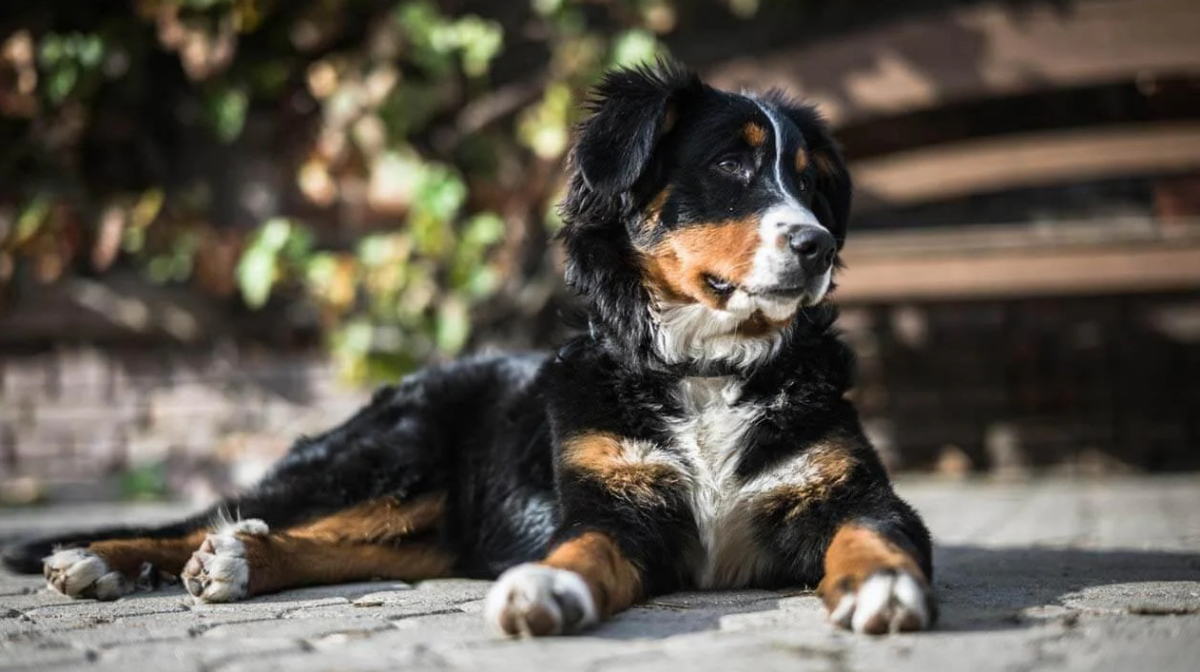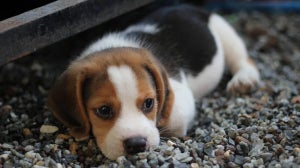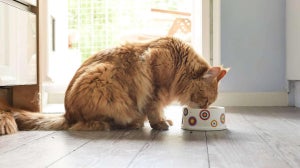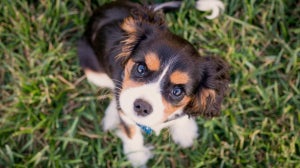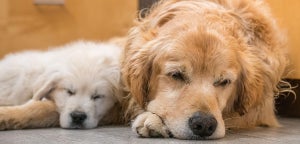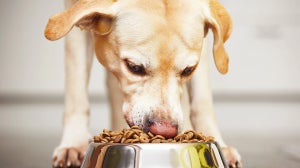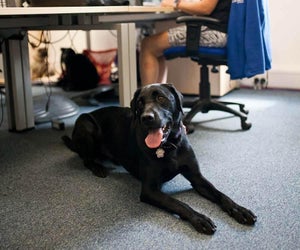
Despite a 30% increase in the last decade in the number of pet owners acknowledging the health risks of dogs being overweight, more than 3/4 of vets in the UK claim the number of overweight pets is on the rise. While many pets are victims to this epidemic, the overwhelming problem is with dogs, with vets estimating that 40-45% of every canine they treat is overweight. The first step to helping any dog lose weight is to recognise when a dog is heavier than he or she should be. Only then can owners determine the causes and implement a diet plan of light dog food and more regular exercise.
The problem: Making the connection between the symptoms and our pets
Dogs are incredibly sensitive to gains and losses in weight and just a few kilograms can result in a range of disabling and life-shortening health issues including; hypertension and heart disease, difficulty breathing, diabetes, liver disease, poor immune function, and arthritis. Yet, if dog owners admit to being aware of the health risks associated with their dog being heavy, but the number of overweight dogs is still on the rise, the problem must be down to owners not recognising when a dog is considered to be overweight:
- The vast majority (63%) of owners believe their pet is the correct weight.
Less than 1 in 10 perform the recommended monthly weight check, while 30% of owners admit to never weighing their pet.
- Not enough owners are aware of the point at which a dog is deemed overweight, or how to detect this themselves.
Only 15% of owners admit their dog is overweight.
Thus, while pet owners’ awareness of the health problems in overweight dogs is gradually increasing, the number of dogs being diagnosed as overweight is still rising because owners are unaware of exactly when a dog can be identified as overweight, what causes it to happen, and how to detect it.
Is my dog overweight?
Dogs come in all shapes and sizes, and even gender can play a part in determining your dog’s ideal weight. The fastest way to be sure if your dog is heavier than they should be is to go and see your vet. He or she will be able to tell you the ideal weight of your dog and whether your pet falls inside or outside of this range. However, it is possible to get a good sense of your dog’s weight yourself. You can weigh your dog at home if you have a set of scales that you can get your dog on comfortably and safely. A dog’s ideal weight is very individual, but if you check our dog breed weight chart you can get an idea of what your dog’s ideal adult weight might be. Of course, this doesn’t apply to dogs that haven’t yet reached full maturity, and there are a whole host of factors which might mean your dog falls outside of their breed’s average (genetics, being more muscular than usual, etc.). The best way to check the weight of dogs of all ages is to do a physical check yourself:
Stand next to, or over, your dog so that you can clearly see their body shape from above. A dog in the ideal weight range will have a clear waist line just before their rear legs and an obvious width difference between their chest and abdomen. From the side, you should also be able to the see the tummy is tucked a bit higher towards the waist (as opposed to being at the same level as the chest).
Conversely, an overweight dog, from above, will lack any obvious definition around the waist. From the side, your dog’s tummy will be in line with, or hang lower than, the chest.
For short coats, an overweight dog will show no signs of any definition around the ribs. For dogs with longer coats, you will need to feel their ribs to get a sense of their weight. If you struggle to feel their ribs, they are likely overweight.
It is important you check your dog’s shape on a regular basis to ensure they don’t stray from their ideal weight and risk developing health problems. We would advise giving your dog a visual check once a fortnight and book two or three general check-ups with your vet throughout the year, even if your dog is otherwise healthy.
How can I help my dog to lose weight?
Once you have confirmed your dog is overweight with your vet, the first thing to do is develop a strict weight loss plan, ensure you and any other house members are fully aware of what is required and that everyone sticks to the diet plan.
What is the best dog food for weight loss?
While you should talk to your vet before changing your dog’s diet, most weight loss plans will include the following key steps:
Feed your dog a light dog food diet
The first step to losing weight is to switch to a food with fewer calories and more fibre and protein. These diets encourage your dog to not only consume fewer calories, but to burn them more quickly, meaning your dog will lose weight faster. We recommend our own light dog food which is specifically designed to help dogs of over 1 year old to lose weight.
Follow the recommended daily amounts on the packaging
Sadly, 68% of dog owners don’t feed their pet according to the recommended guidelines, despite the food being specifically designed for each dog’s size and breed to ensure their diet is as healthy as possible. Make sure to follow the guidelines on the side of the dog food packaging and use our dog feeding guide for the healthiest meal sizes.
Cut out the treats
A dog that is used to eating more may start to bother you for more food if they feel hungry, but keep their meal times strict and don’t feed them extra food, treats, or human food until they have reached their ideal weight. If you need to use treats for your dog, set aside a portion of their daily allowance to use as treats.
Ensure all other members of your household are aware of the plan and STICK TO IT.
If someone else is sneaking your dog extra food, your dog won’t lose weight and their health will remain at risk.
How much exercise does my dog need?
As with any diet, it isn’t just what you eat, but what you do with your body.
AT LEAST 2 walks per day for 30 minutes or more
Dogs need regular exercise to burn off those excess calories, turn that protein into healthy muscle, keep their minds active, and to keep their heart strong. Unfortunately, up to 45% of dogs only get up to 30 minutes of exercise each day and 1% are never walked at all.
Some breeds need more exercise than others
Some dogs require more exercise than others, especially those that have traditionally been bred to work all day. You will need to schedule more frequent or longer walks to help them keep the weight off.
Regular play is essential
A great way to get your dog fit while also stimulating them mentally is to play with them regularly. Buy toys to hide around the house, chase each other, and have fun creating little puzzles for your dog to solve (hide-and-seek is always a popular favourite). Really active games are a great way to exercise your dog if you can’t take them out for a walk; some dogs love ‘fetch’ and will run around much more than they would on a walk. It’s important to find the type of exercise that is best suited to you and your dog so that it is enjoyable as well as having a positive effect on your dog’s health!
How fast can a dog lose weight?
Each dog is different and some dogs lose weight faster than others Have patience. Ultimately, how fast your dog loses weight depends not only on how strictly you keep to the diet plan, but your dog’s age, breed, and genetics. Visit your vet regularly for assurance that you are on the right path and to make any adjustments if necessary. It can depend on the breed Some breeds tend to struggle with weight more than others, e.g. Retrievers. However, on average, you can expect an overweight dog to lose 1-2% of their body mass every week. Weigh your dog regularly Keep track of your dog’s weight throughout the course of their diet to make sure he or she is on track. Once your dog reaches their ideal weight range, you can gradually switch back to their normal dog food and occasionally give them treats again. However, continue to impose a regular meal plan, serving the recommended portions, and maintain daily exercise to ensure they keep the weight off. Our light diets can also be used to help dogs that are prone to weight gain to maintain a healthy weight.
How can I get my older dog to lose weight?
Many owners believe that older dogs that are less able to exercise require a different strategy to diet, but the same rules apply. Switch to a light dog food and follow the recommended portion sizes, give them plenty of exercise (being careful not to overdo it), and cut out the table scraps and treats. Just like younger dogs, some senior dogs lose weight very slowly, while others drop it quickly. Have patience and show your dog a lot of love and attention by substituting food rewards for play, affection and walks. The only exception to this should be if your dog has certain food or exercise requirements due to an existing medical reason. Thus, it is always advisable that you consult your vet before beginning any diet plan.
Prevention is the best cure
As with any illness, prevention is the best cure. The sooner you impose a regular, well-portioned diet and regular exercise on your dog, the better chance they have to stay healthy and live their life to its full potential. If your dog is overweight, don’t panic or feel guilty—it happens! However, do be responsible by admitting the reality and taking charge of your dog’s diet to get back into shape. Feed them well, exercise them regularly, and remember that no treat is better for your dog than your love and attention; so, cut down on the snacks and up the play.

